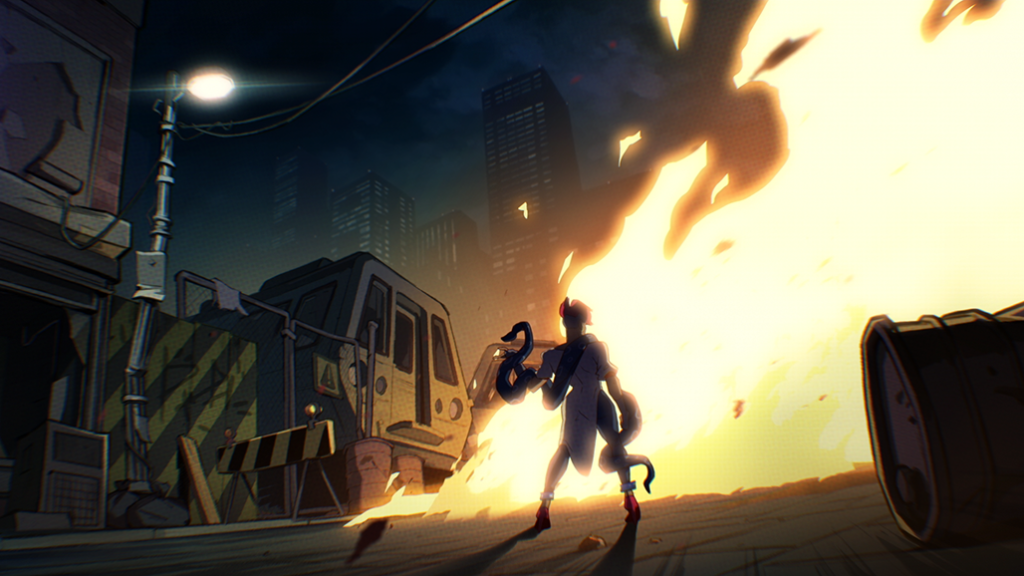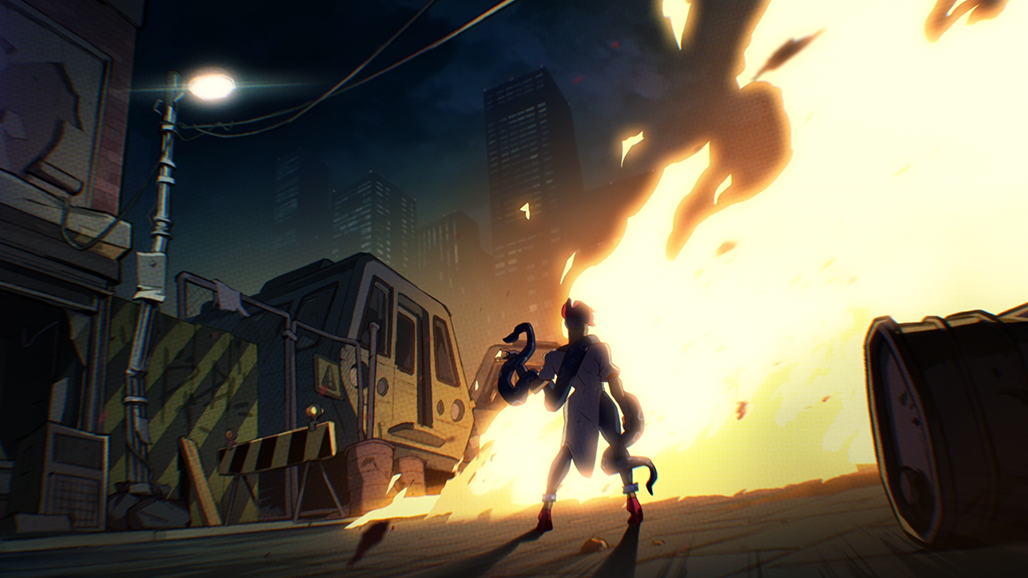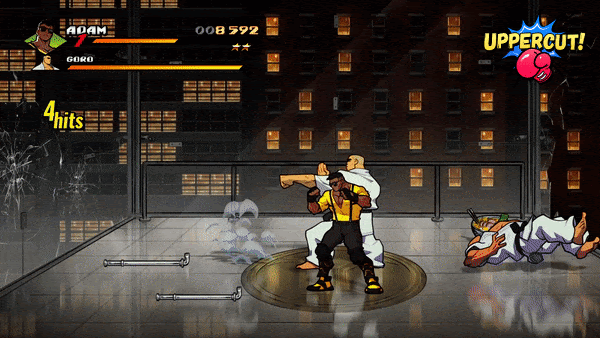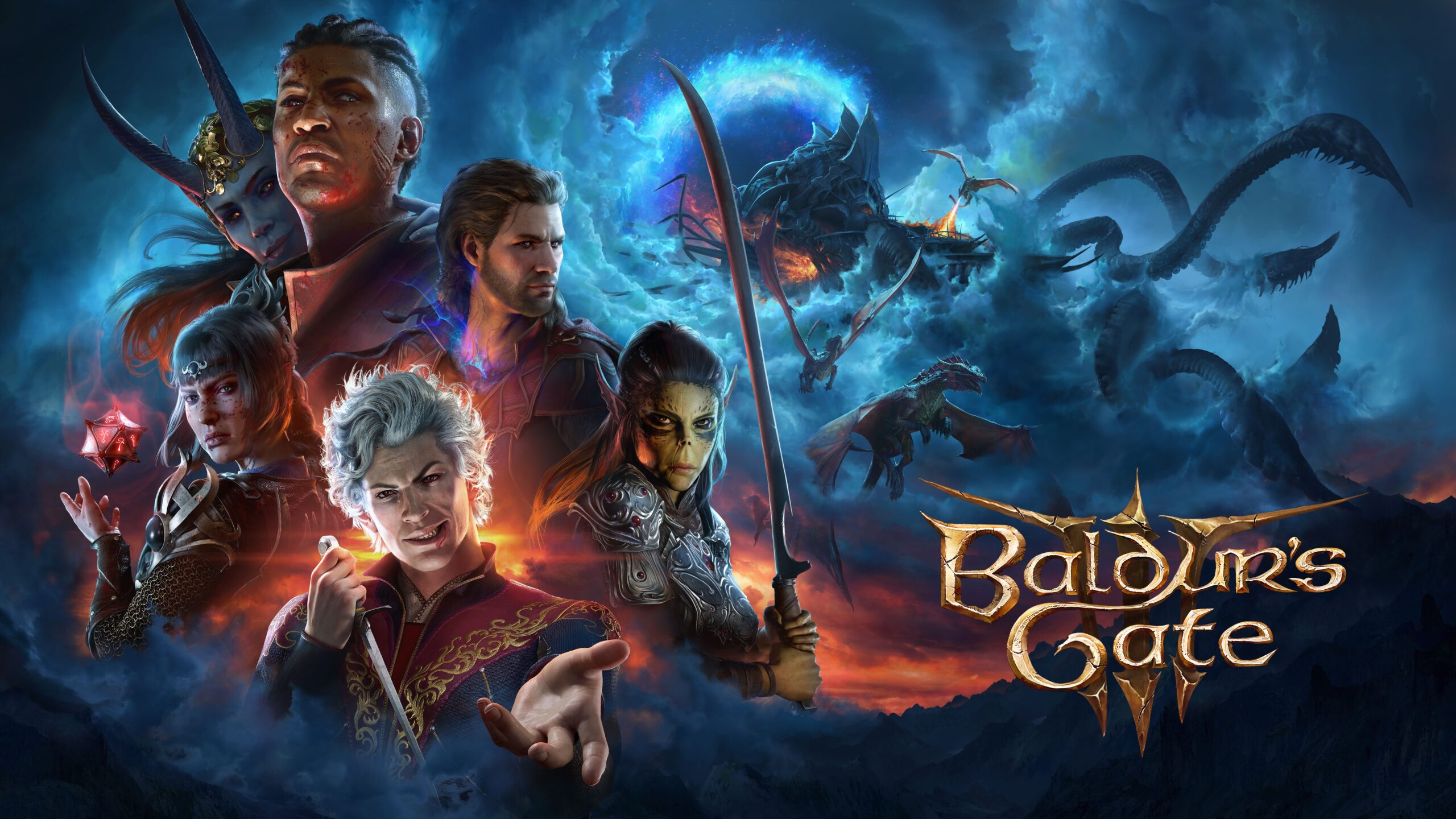
Image Source: Dotemu
Streets of Rage 4: Crime and Punishment
Hi, Monti!
I’m so glad we have this opportunity to talk about Streets of Rage 4. It might not have been my favourite game of 2020, but it sure was terrific, and the reason I want to talk to you about it is that it ended up affecting me quite profoundly. I don’t believe the developers ever intended it. Or maybe they did? Perhaps you can help me unpack that. But, we’ll come to all that in a bit.
Like I said, the game is terrific. I wasn’t sure an old-school brawler could compete with everything the 2020 gaming landscape has to offer. A game like Hades, for instance, which showcases so much of what has happened in gaming since Streets of Rage’s last outing in 1994: RPG mechanics, item collecting, base-customisation, three-dimensional characters, RNG modifiers, variations on permadeath… modern gameplay is just so intense. So personal. So unpredictable.

Meanwhile, Streets of Rage 4 is about as straightforward as it gets. The moveset you’re given on the first screen will carry you all the way to the credits. While games as direct as Streets of Rage 4 can sometimes feel repetitive, what kept the gameplay fresh and new with each level were your enemies. Each one has its own little routine to contend with, and when multiple enemies are attacking from every direction, the game turns into a kind of puzzle. The glass elevator scene of Stage 9 provides the backdrop for one of my favourite encounters.
Nearly every enemy type in the game makes an appearance here. We begin with a cadre of thick-shouldered, suit-wearing henchmen who dominate the horizontal space with handgun fire. You’ll need to weave your way towards them, briefly dipping into their line of sight to draw fire, pinning them to the spot while you move close the distance. Later, their melee equivalents show up: fearsome judo masters with fists the size of paint can. If you approach these guys head-on-fists-blazing, they will absolutely destroy you. The enclosed space of the elevator turns the playing field into a kind of live-action Minesweeper.
This, then, is a game about putting out fires where you can, about reading the playing field, about thinking two steps ahead. If you do manage to corner your opponent, perhaps using the invincibility frames of your throw as a shield, the rewards are delicious: the walls of this elevator are glass, remember? Instantly dispatching a pair of judo masters by kicking them through the shattered glass behind them has to be the most satisfying moment 2020 gaming had to offer:

That tight gameplay is what drew me to Streets of Rage 4 this summer. I played a few levels almost every afternoon, and while my routine stayed pretty much the same, the wider social context in which I played was rapidly changing. On May 25th, George Floyd, a 46-year-old black man, was killed in broad daylight by a white police officer while being arrested on suspicion of using a counterfeit bill. The killing sparked worldwide protests and intense debates around issues of race and the role of the police, And those real-world issues inevitably seeped into my playing experience.
Streets of Rage has always had a complicated relationship with the police. Its original three protagonists- Axel, Blaze, and Adam, are all ex-police officers who quit the force to fight police corruption. It sounds quite radical until you look at the details: the source of this corruption is nothing inherent within the system itself, but rather, a comic-bookish crime syndicate that has infiltrated the police. You’re not trying to fight the power, you are the power. You must restore and enforce that power. You must make the police great again.
To quell any doubts, here’s what happens when you call for backup in the original:
The comments beneath this video make it clear no one was particularly scandalised by Streets of Rage’s depiction of police corruption.The SoR series, then, is copaganda- media that glorifies the police, presenting an idealised view of their role in society. It goes hand-in-hand with a particular view of criminality that suggests people who break the law are weak-willed, depraved, and animalistic. It’s a view I associate most strongly with Travis Bickle, the protagonist of Taxi Driver, who observes NYC nightlife from the vantage point of his taxicab:
“All the animals come out at night – whores, skunk pussies, buggers, queens, fairies, dopers, junkies, sick, venal. Someday a real rain will come and wash all this scum off the streets.”
Isn’t that what the Streets of Rage series is all about? You are the rain, come to wash the scum off the streets.
Streets of Rage 4 preserves this philosophy. Once again, an evil crime syndicate has infiltrated the police. Once again, you are called upon to wash the scum off the streets, laying out a citizenry decked in hip-hop and punk attire.
But it’s also a game where you get to do this:
Now here’s what I mean about Streets of Rage 4 affecting me in a way the developers never intended: I don’t think the game ever set out to challenge anyone’s notions about policing. I think you get to beat up police officers and riot cops because it’s transgressive, and the appeal of fiction is often doing or witnessing things that are off-limits to us in real life. It’s as much of an endorsement of anti-fascist violence as Silence of The Lambs is an endorsement of cannibalism.
Nevertheless, Streets of Rage 4 came along at a time when my views about the police were fundamentally changed. My entire adult life I’ve wanted police reform, but it wasn’t until this summer that, thanks to the dedicated work of BLM activists worldwide, I started to imagine a world without police altogether. One of places I could feel that change taking place in me was the sense of aversion every time this guy showed up:
Murphy here is a perfect embodiment of the militarized police power fantasy. He’s white, he wears articulated body armour, he has gloves with reinforced knuckles, and an opaque face shield ensures he can’t be identified. Not pictured: a rechargeable riot shield that requires a considered approach if you’re going to take him down unscathed.
And here’s the thing about those riot shields: breaking them felt right. It felt cleansing, as though each one represented one of the many lies I’ve been told about policing ever since I was first exposed to them in the media. While you can’t undo a lifetime of conditioning in a single afternoon, every time I battled through the corridors of Stage 2’s Police Precinct, I could feel something toxic being eroded.
And it felt like affirmation, too: I can imagine better than this! If you’re new to the idea of a world without police, it sounds like an invitation to chaos. And why shouldn’t it? You’ve never been offered an alternative. But the alternatives are out there, and once you start looking for them, it’s hard to stop.
So, Monti- what did you think of Streets of Rage 4? What do you think it has to say about crime and punishment? How much credit can I attribute to the developers for the experience I had?
Wishing you more than well,
Jefferson






2 thoughts on “Streets of Rage 4: Crime and Punishment”